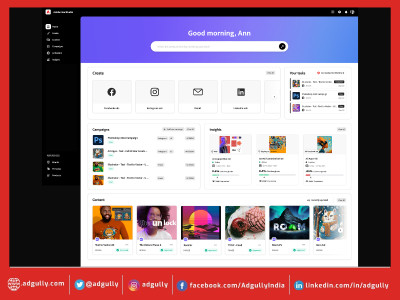How marketing can make digital experience matter by closing digital empathy gap
Authored by Timo Kohlberg, Head of Product Marketing EMEA - Customer Journey Management
It’s never been easier for a customer to jump ship. One negative experience and they can swap brands at the click of a button or swipe of a screen – whether that’s down to bad user experience (UX), poor customer service, or a lack of transparency and empathy.
Indeed, the challenges and hardships caused by the COVID-19 pandemic has only served to highlight the importance of using empathy in building long-lasting emotional relationships between brand and customer.
For marketers, customers switching between brands can be a bitter pill to swallow, but in today’s increasingly digital-first world, it’s imperative that companies focus on experience over transaction, on using personalisation to achieve the levels of empathy that truly get to the heart of people’s needs, wants, and desires.
Mapping digital body language: From shallow interaction to empathetic experience
Over the past couple of years in marketing, there’s been a real attitudinal shift in how we approach understanding our customers. It’s not always about what a customer does do, but also what they don’t do. Forward-thinking brands will be able to track direct brand engagements, as well as map a customer’s overall activity whether on- or offline, learning the channels they don’t interact in, for example, or products they were interested in but did not buy.
As we’ve already mentioned, the unfortunate truth for many marketers is that customers often ditch a brand after their first transaction. They’re enticed by a special offer or promotion, but there may be no follow-up afterwards to compel them to remain a repeat customer.
The best way to close the empathy gap and transform one-shop buyers into repeat customers, is to build a full understanding of the customer’s digital body language, and provide rich experiences that are optimised in real-time to each stage of the customer journey and the customer’s context.
How technology can close the digital empathy gap
Technology has come a long way when it comes to collecting customer data and using it to inform personalised experiences, but when it comes to creating a human customer journey online, brands are struggling to translate the empathy of a face-to-face experience into a digital setting.
Indeed, most marketers are set up to have a view or profile of the customer but different departments possess different profiles of their respective customers. So the the entire organization is lacking that single unified view of the customer across journeys and the entire lifecycle.
And this is something customers are picking up on. It’s no longer enough to personalise emails with [Insert first name here]. Just as a customer would expect a small business owner to respect their space when browsing in-person through a store, or approaching them when it’s clear they need assistance, people expect the same level of emotional understanding online.
Engaging customers with more empathy can come in many shapes and sizes. One area of focus that’s emerged during the pandemic is the importance of local context and community empowerment. People increasingly want to support businesses that are geographically close by, and any efforts that brands make to strengthen local economies and communities are often viewed favourably.
Fortunately, thanks to the power of cloud-based technology and the intelligent capabilities of AI, brands are now in a position to understand and, better yet, react to someone’s digital body language in real-time, no matter their place on the customer journey.
Transaction, meet experience: The best of both worlds with Adobe Journey Optimizer
At Adobe, we’ve developed technology that truly gets to heart of a customer’s emotional state. Adobe Journey Optimizer is perfectly capable of supporting everything from large-scale messaging to individual customer moments and real-time journeys. For example, when a football match is about to start, marketers can target all app subscribers with a message in minutes – or retarget a message, based on interest and location, such as a team jersey the subscriber perused previously being back-in-stock. Relevance, optimal time and going beyond basic marketing use cases can help brands build trust and have an empathetic conversation, rather than simply sending a generic discount offer.
And, because the real-time unified customer profile is centrally available – and not deposited in various silos, marketers are in a commanding position to take much better control of the data and action insights right away. The end effect is marketing teams with more time and resources to hone in on the creativity, the messaging and strategy, rather than the miniscule intricacies of the execution, which is historically a complicated and time-consuming process.
Empathy, the brand differentiator
The bottom line is that customers who possess emotional connections with their brands will spend more on products and services. Not only this, when customers feel a connection to your company, they’re less likely to display price sensitivity, and they’re more likely to recommend the brand to others.
In such a busy and cluttered world, brands who display emotional intelligence to create experiences that are not just personalised, but are crafted to suit specific moods, preferences and the individual context, will be the ones who elevate themselves above competitors, as they pave the way for this new and exciting era in experience.
DISCLAIMER: The views expressed are solely of the author and Adgully.com does not necessarily subscribe to it.
















Share
Facebook
YouTube
Tweet
Twitter
LinkedIn